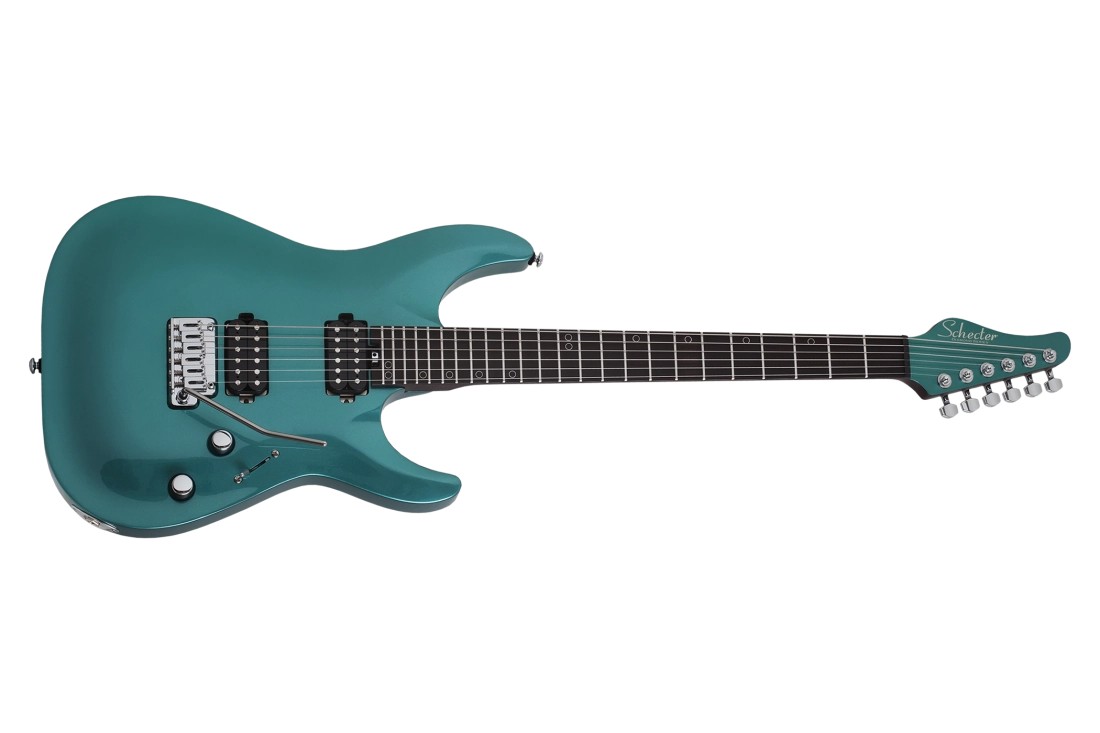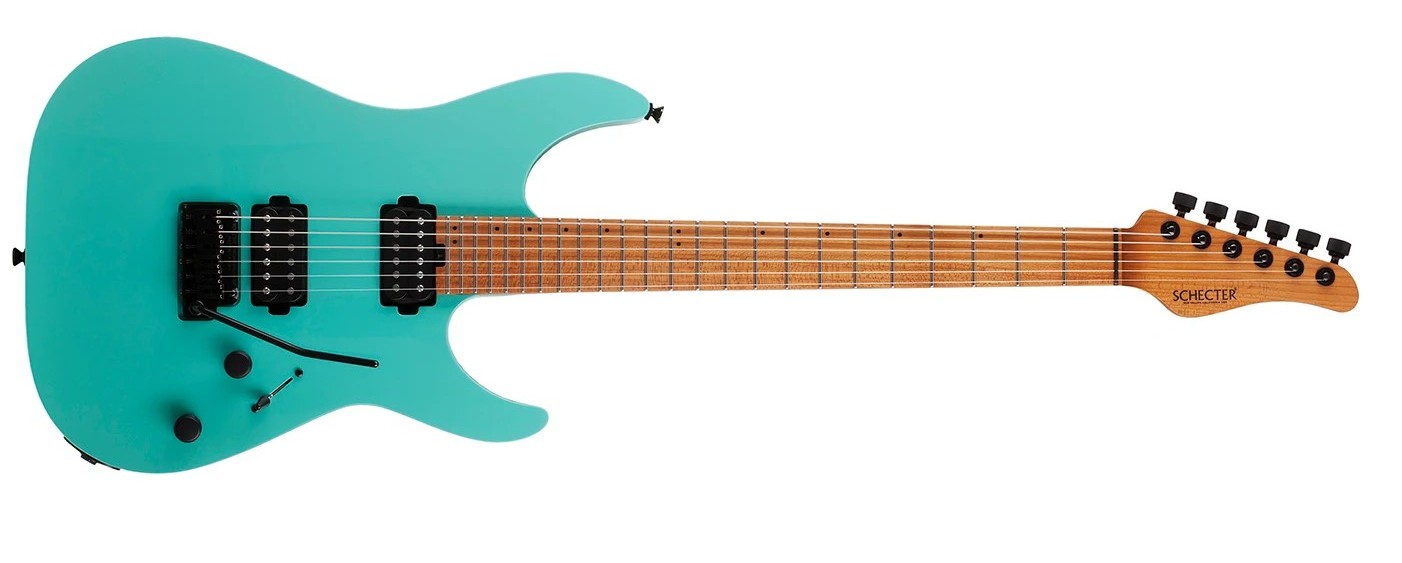Schecter put out the AM-6 as the initial signature model for Aaron Marshall. It excelled in multiple categories because it leveraged the great manufacturing quality from Indonesia at a good price while offering things that are normally found on American-made guitars:
What makes this unique are the American and Japanese high-quality hardware and the Wenge neck with a tilt-back headstock and compound radius. You see this only on very high-end boutique guitars. For example, the Wenge neck is also found on the Nick Johnston Schecter USA Signature which is >$3K USD. Though that is a 1-piece neck while the AM-6 is 3-piece, and an argument could be made that the 3-piece is actually more stable.
So the issue is -- since this guitar is already as good as something from the USA shop, what do you do with the USA-made sig version? Well, that's the marketing problem on differentiation. The USA signature has:

This makes NO SENSE! The USA signature model in my opinion has features which do not make it more desirable, with some features that are easier to make than the Indonesian model. The Alder body and Roasted Maple neck and the custom tuners -- make it an upcharge of $2100 USD? Note that an Alder body is likely more costly than Basswood, but when it comes to a high-gain guitar, Basswood is actually much more common (see Ibanez) vs Alder which is used more on a vintage Strat-style. And a roasted Maple neck is not superior (or as costly) to a Wenge neck. The arched body and compound radius neck are harder to make on the AM-6. Finally, the normal items which make American guitars much more expensive (and contribute to the tone) are the hardware and the pickups. But they are the SAME. I also think the Indonesian model looks better with the color theme and the ring inlays. They really missed the mark on the marketing here. I don't blame them though. The Indonesian model is already so good -- what could the USA shop do? Not much. I guess to some folks, the Made-In-USA label is worth $2100 USD extra? No way in my book.
- Unique woods (Wenge for the neck, though it is 3-piece)
- Ebony fingerboard with a compound radius 12-16"
- Basswood body (nothing special)
- Arched body (not common)
- High-end hardware throughout (Hipshot tuners, Gotoh 510 trem, nice knobs, electronics)
- USA-made Schecter pickups
- Tilt-back reverse headstock
- At a price of $1399 USD !
- This basically has features that competes with Suhr guitars which cost 3X the price! In fact, it has features that exceed many boutique guitar models.
What makes this unique are the American and Japanese high-quality hardware and the Wenge neck with a tilt-back headstock and compound radius. You see this only on very high-end boutique guitars. For example, the Wenge neck is also found on the Nick Johnston Schecter USA Signature which is >$3K USD. Though that is a 1-piece neck while the AM-6 is 3-piece, and an argument could be made that the 3-piece is actually more stable.
So the issue is -- since this guitar is already as good as something from the USA shop, what do you do with the USA-made sig version? Well, that's the marketing problem on differentiation. The USA signature has:
- Quartersawn Roasted Maple neck (nothing special)
- Quartersawn Roasted Maple fretboard with fixed 16" radius fretboard
- Body of Alder (not Basswood on the AM-6)
- Non-arched body
- Same trem as AM-6, but custom Hipshot locking tuners and knobs (same par as Gotoh)
- Same pickups as the AM-6
- No tilt-back headstock
- $3500 USD
This makes NO SENSE! The USA signature model in my opinion has features which do not make it more desirable, with some features that are easier to make than the Indonesian model. The Alder body and Roasted Maple neck and the custom tuners -- make it an upcharge of $2100 USD? Note that an Alder body is likely more costly than Basswood, but when it comes to a high-gain guitar, Basswood is actually much more common (see Ibanez) vs Alder which is used more on a vintage Strat-style. And a roasted Maple neck is not superior (or as costly) to a Wenge neck. The arched body and compound radius neck are harder to make on the AM-6. Finally, the normal items which make American guitars much more expensive (and contribute to the tone) are the hardware and the pickups. But they are the SAME. I also think the Indonesian model looks better with the color theme and the ring inlays. They really missed the mark on the marketing here. I don't blame them though. The Indonesian model is already so good -- what could the USA shop do? Not much. I guess to some folks, the Made-In-USA label is worth $2100 USD extra? No way in my book.


